Introduction:
Human history is a tapestry woven with countless threads of remarkable events and groundbreaking inventions that have shaped the course of civilizations and the world as we know it. From the primordial origins of life to the rise of complex societies, our journey through time is a fascinating exploration of human triumphs, challenges, and the relentless pursuit of progress.
In this captivating chronicle, we embark on an extraordinary expedition through the annals of history, delving into the pivotal moments and turning points that have propelled humanity forward. From the very emergence of life on Earth to the awe-inspiring accomplishments of ancient civilizations, we will traverse the depths of time to uncover the profound impact of these events on the human story.
Our expedition begins in the primordial oceans, where the first stirrings of life took place. Witness the remarkable evolution of organisms, as they gradually adapted to their watery surroundings, laying the foundation for the rich diversity of life that would follow.
As the eons passed, a momentous transition occurred as life ventured from the depths of the seas to the uncharted realms of land. Explore the audacious journey of early tetrapods, evolving the necessary traits to survive on terra firma, forever altering the course of evolution and paving the way for the reign of land-dwelling creatures.
But it was during the age of dinosaurs that the world truly witnessed the grand spectacle of prehistoric life. Behold the colossal creatures that roamed the Earth, dominating the landscape and shaping entire ecosystems. Marvel at the intricate interplay of predator and prey, and the cataclysmic events that eventually led to their extinction, making way for the rise of new life forms.
The story then takes a profound turn as we delve into the evolution of early humans. Follow their arduous journey across continents, adapting to various environments, and honing their survival instincts. Witness the pivotal moments in our species' development, from the discovery and mastery of fire, which revolutionized our abilities and ushered in a new era of progress, to the invention of tools that elevated our hunting and gathering capabilities.
With the advent of agriculture, humanity witnessed a transformative revolution. Experience the seismic shift from nomadic hunter-gatherer societies to settled farming communities, as humans discovered the art of cultivating crops and domesticating animals. This pivotal moment laid the groundwork for the development of permanent settlements, the birth of complex societies, and the rise of magnificent cities that would shape the course of human civilization.
Along this enthralling journey, we will encounter other significant milestones: the invention of the wheel, which revolutionized transportation and trade; the development of written language, enabling the recording of knowledge and the transmission of ideas across generations; and the construction of awe-inspiring megalithic structures, testaments to the architectural prowess and ingenuity of our ancestors.
Through captivating storytelling, evocative imagery, and a touch of suspense and humor, we will bring these extraordinary events to life, immersing ourselves in the triumphs and tribulations of our predecessors. Each chapter of this grand narrative reveals the indomitable spirit of human curiosity, the ingenuity that defied the odds, and the resilience that propelled us forward.
Join us on this epic adventure as we traverse the vast expanse of time, unlocking the secrets of our shared history and discovering the remarkable journey that has shaped our world. From the ancient past to the present, we will unravel the threads that connect us to our ancestors, gaining a profound appreciation for the extraordinary legacy they have bequeathed us.
Prepare to embark on a captivating expedition through the corridors of time, where the stories of our ancestors await, ready to transport us to worlds long gone but forever etched in the tapestry of human history. Let the adventure begin!
Section 1: The Dawn of Life on Earth
In the depths of ancient oceans, where the ebb and flow of tides danced in harmony, life emerged in its simplest and most primitive forms. This momentous event marked the beginning of a journey that would eventually give rise to the intricate web of life that now spans the planet.
Picture a world teeming with microscopic organisms, drifting through the vastness of the primordial seas. These early life forms, known as single-celled organisms, multiplied and diversified, evolving over countless generations. Through a remarkable process known as natural selection, they gradually acquired new traits and adaptations that allowed them to thrive in their watery realm.
Over millions of years, the oceans became a stage for the dazzling performance of evolution. Multicellular organisms began to emerge, bringing with them new levels of complexity and specialization. From primitive sponges to intricate jellyfish, the seas witnessed a flourishing array of life forms, each one contributing to the ever-expanding tapestry of biodiversity.
But it was the development of hard shells and skeletons that paved the way for a momentous transition: the migration of life from the sea to the land. In this monumental leap, ancient organisms ventured beyond the familiar waters, taking their first tentative steps onto unknown terrain.
Imagine the challenges they faced as they confronted an environment vastly different from the aqueous realms they had called home for eons. The initial pioneers of this transition, known as tetrapods, possessed adaptations such as sturdy limbs and lungs, enabling them to navigate the uncharted landscapes and breathe air.
This transition to land marked a significant turning point in the history of life on Earth. It opened up new possibilities for survival, allowing organisms to explore unoccupied niches and diversify into a multitude of forms. The evolutionary journey that followed witnessed the emergence of amphibians, reptiles, and eventually mammals, each one finding its place in the ever-changing tapestry of life.
As we reflect on this remarkable chapter in Earth's history, we are humbled by the sheer tenacity and resilience of life. From humble beginnings, it embarked on an incredible journey of adaptation, innovation, and transformation. The stage was set for the next epoch, where the reign of reptiles and the rise of dinosaurs would captivate the imagination of future generations.

Section 2: Transition to Land
In the grand theater of evolution, a remarkable transformation was underway. Life, which had long thrived within the depths of the oceans, was preparing for its audacious leap onto the untamed expanses of land. This epoch-making transition would forever alter the course of biological history.
Imagine the scene: ancient shores adorned with towering cliffs, crashing waves, and a pristine landscape waiting to be conquered. In this backdrop, a group of pioneering organisms, known as early tetrapods, dared to venture beyond the water's edge. With their sturdy limbs and newfound ability to breathe air, they embarked on an extraordinary odyssey into uncharted territory.
The journey was not without its challenges. The early tetrapods faced a multitude of hurdles as they adapted to the demands of their new terrestrial habitats. The shift from buoyant water to the weight-bearing land required substantial anatomical changes. Legs developed from fin-like structures, allowing for efficient movement on solid ground. Lungs evolved to extract oxygen from the air, providing a vital lifeline in the absence of water.
Over time, these intrepid pioneers refined their adaptations, giving rise to a diverse array of land-dwelling creatures. Amphibians, with their remarkable ability to inhabit both land and water, emerged as the ambassadors of this newfound realm. Their remarkable diversity showcased nature's creative prowess, with species ranging from small, agile frogs to formidable salamanders.
As the continents continued to take shape and environments evolved, the tetrapods encountered new opportunities and obstacles. They encountered a wide array of habitats, from lush forests to arid deserts, each presenting unique challenges that spurred further adaptations. Limbs grew stronger, allowing for more efficient locomotion and exploration of diverse landscapes.
The transition to land not only expanded the horizons of life but also brought about profound changes in ecosystems. Terrestrial plants, too, embarked on their own evolutionary journey, establishing roots in the soil and adorning the Earth with verdant landscapes. The symbiotic relationship between plants and early land-dwelling organisms laid the foundation for complex ecosystems that continue to thrive to this day.
It is awe-inspiring to ponder the significance of this transition. By taking those first brave steps onto land, life unlocked a world of endless possibilities. The move from water to land initiated a cascade of events that would shape the future of life on Earth. It set the stage for the rise of reptiles, the dominance of dinosaurs, and eventually the emergence of mammals—the very lineage that would lead to the existence of humanity.

Section 3: Age of the Dinosaurs
In the annals of Earth's history, there existed an era that captivates the imagination like no other—the Age of the Dinosaurs. Spanning millions of years, this extraordinary period was characterized by the awe-inspiring reign of these colossal reptilian beings that ruled the land, sea, and sky.
Picture a world vastly different from the one we know today. Dense forests sprawled across ancient continents, punctuated by sprawling swamps and towering mountains. The skies teemed with flying reptiles, while the seas harbored magnificent marine reptiles. And on the land, gigantic dinosaurs roamed, their majestic forms casting shadows over the landscape.
The Age of the Dinosaurs witnessed an incredible diversity of species, each uniquely adapted to its ecological niche. From the towering Brachiosaurus, with its long neck stretching towards the treetops, to the swift and nimble Velociraptor, these creatures occupied every ecological niche imaginable. Their immense sizes, fierce abilities, and intricate behaviors make them some of the most captivating creatures to have ever roamed our planet.
But what brought about the dominance of dinosaurs? It was a combination of factors, including their anatomical adaptations, reproductive strategies, and the prevailing environmental conditions of the time. Dinosaurs evolved an extraordinary range of body sizes, from the smallest of feathered dinosaurs to the mighty titans like Tyrannosaurus rex. These adaptations allowed them to exploit various food sources and environments, giving rise to a complex web of predator-prey relationships and coexistence.
The Age of the Dinosaurs was also marked by significant geological and climatic changes. Continents were in motion, and the supercontinent Pangaea gradually broke apart, shaping new landmasses and ocean basins. As climates shifted, from humid and tropical to arid and temperate, ecosystems transformed, influencing the distribution and evolution of dinosaur species.
These magnificent creatures were not without their own struggles. The fossil record reveals evidence of inter-species competition, territorial disputes, and even instances of cannibalism. It was a world filled with constant challenges, where survival often hinged on the ability to adapt and overcome the harsh realities of existence.
Ultimately, the reign of the dinosaurs came to an abrupt end, marked by a cataclysmic event—the mass extinction at the end of the Cretaceous period. The exact cause of this extinction event remains a topic of scientific investigation, but it is widely believed that a combination of factors, including a massive asteroid impact and volcanic activity, led to the demise of these extraordinary creatures.
Though the dinosaurs disappeared from the face of the Earth, their legacy lives on. Their fossils continue to provide valuable insights into the ancient world and help us unravel the mysteries of prehistoric life. Moreover, the extinction of the dinosaurs paved the way for the rise of mammals, including our own human lineage, setting the stage for the next chapter in Earth's history.
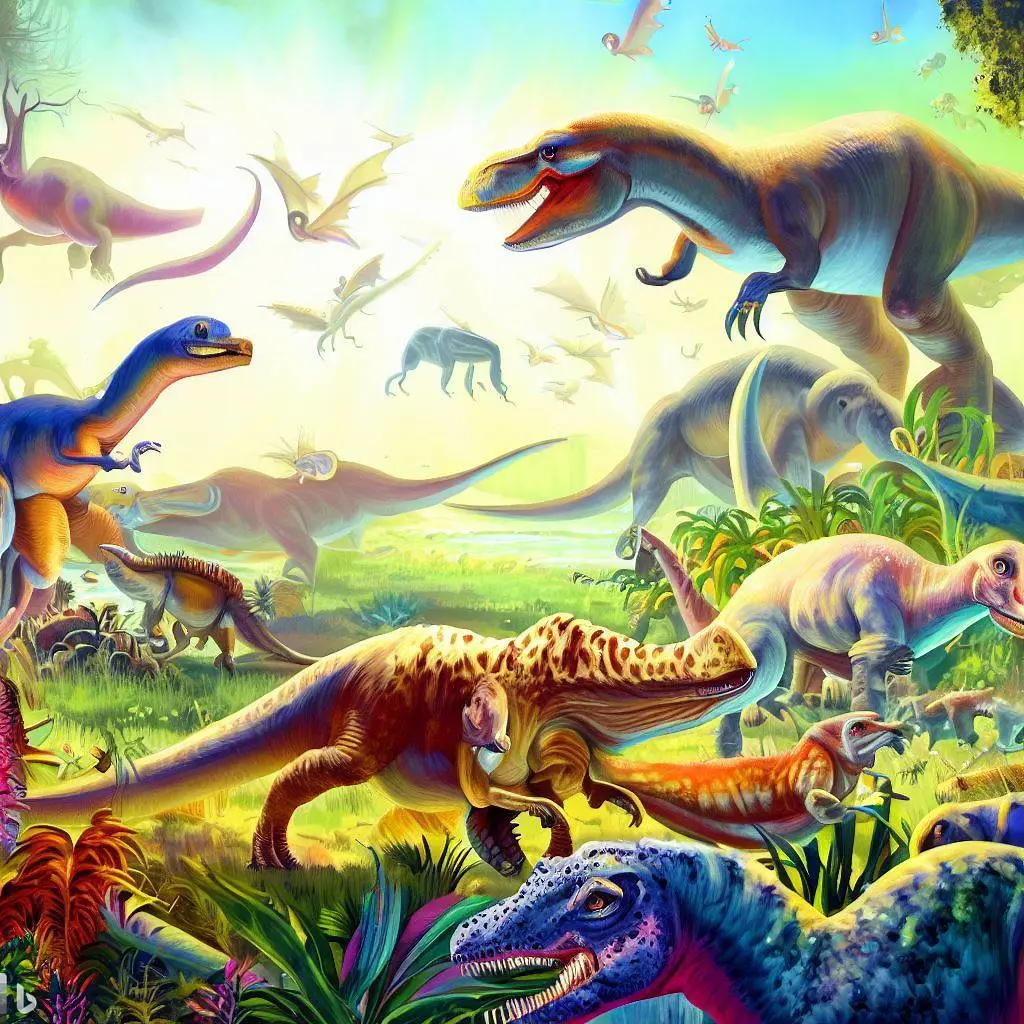
Section 4: Evolution of Early Humans
The story of humanity is a remarkable journey of evolution, adaptation, and innovation. From our humble beginnings as early hominids to the complex and diverse societies we inhabit today, our species, Homo sapiens, has come a long way.
Our story begins millions of years ago with the emergence of our earliest ancestors. These early hominids, such as Australopithecus and Homo habilis, walked the ancient landscapes, developing traits and characteristics that would set the stage for the evolution of modern humans.
One of the defining features of early humans was their ability to walk upright on two legs, a characteristic known as bipedalism. This adaptation freed their hands, enabling them to manipulate objects and develop tools—an essential step in our evolutionary journey.
As our ancestors continued to evolve, they spread across different regions of the world. Migration played a crucial role in their survival, as they sought new resources, adapted to different environments, and encountered diverse challenges. These migrations shaped the distribution and diversity of early human populations.
The development of complex social structures was another significant milestone in our evolutionary history. Early humans began to live in groups, fostering cooperation and division of labor. This social organization provided advantages such as increased protection, shared knowledge, and the ability to specialize in different tasks, ultimately contributing to our success as a species.
The mastery of tools and the use of fire were pivotal advancements in early human societies. Stone tools, such as hand axes and scrapers, enabled early humans to better exploit resources, hunt, and defend themselves. Fire, on the other hand, provided warmth, protection, and a means to cook food—a transformative discovery that increased our access to nutrients and unlocked new possibilities.
With the development of language and communication, early humans were able to share knowledge, pass down traditions, and cooperate more effectively. Language allowed for the transmission of information across generations, laying the foundation for cultural development and the preservation of collective wisdom.
The evolution of early humans was not a linear progression but rather a complex web of branches and extinctions. Various hominid species coexisted and interacted, competing for resources and adapting to different ecological niches. Some species, like Neanderthals, developed sophisticated tools, buried their dead, and displayed symbolic behavior, highlighting the rich diversity of human-like beings that once walked the Earth.
The story of early humans is one of resilience, innovation, and adaptability. Our ancestors faced countless challenges—harsh climates, predators, and limited resources—and yet, they persisted. Each step in our evolutionary journey brought us closer to the cognitive abilities, social complexities, and technological advancements that define us as modern humans.
As we explore the archaeological sites, examine fossil remains, and decipher ancient DNA, we continue to uncover new insights into our past. The study of early humans not only sheds light on our own origins but also offers valuable lessons about the human capacity to overcome adversity, adapt to changing environments, and forge new paths forward.
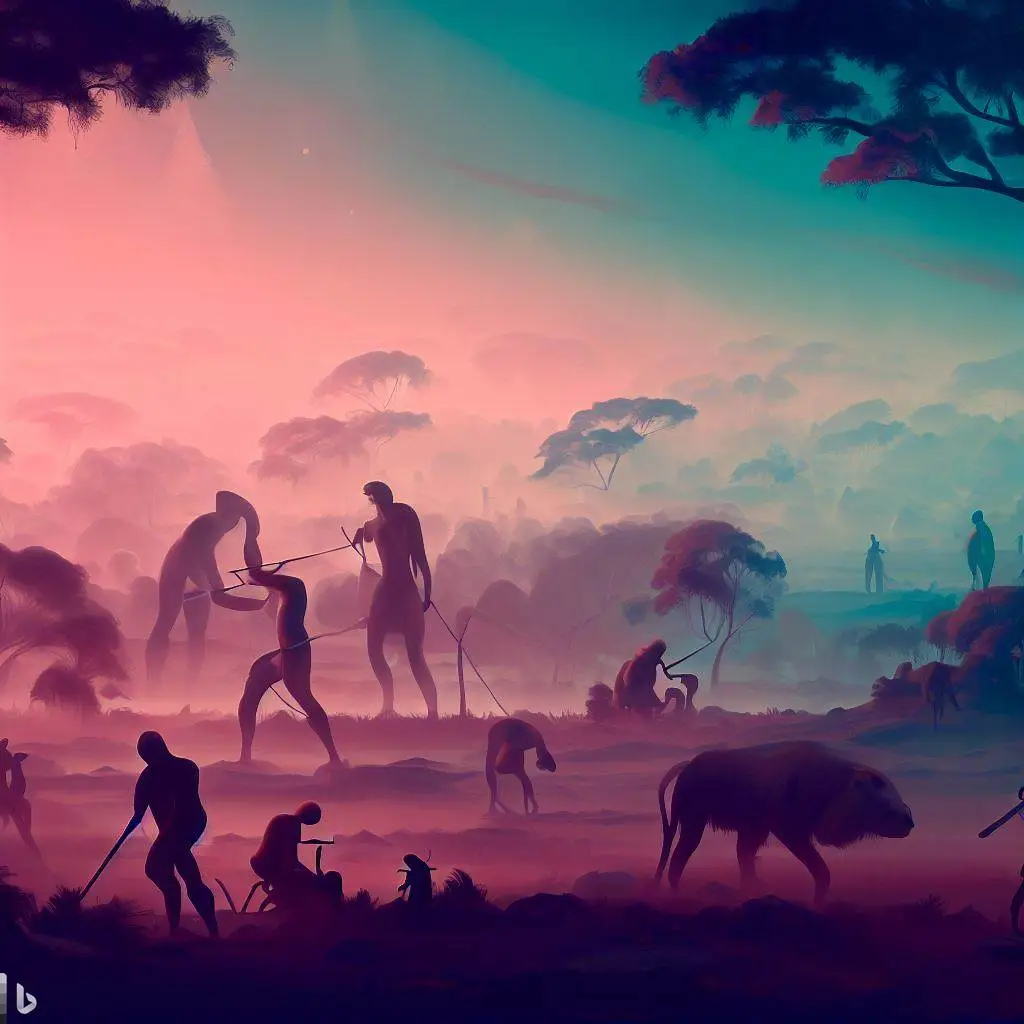
Section 5: Mastery of Fire
Fire. It is a force of nature that has both fascinated and terrified humanity since time immemorial. For early humans, the discovery and mastery of fire were monumental achievements that would profoundly shape our development and alter the course of our species.
Imagine our ancient ancestors, huddled together in the darkness of a cold night, surrounded by predators and unknown dangers. Then, through a stroke of luck or perhaps a moment of curiosity, they witness the flickering glow of flames. The dancing firelight brings warmth, security, and a newfound power that changes everything.
The mastery of fire was a game-changer for early humans. It provided warmth and protection, allowing them to survive in harsh environments and extend their geographic range. The ability to control fire also granted them an advantage over other predators, making them more formidable and increasing their chances of survival.
But fire offered more than just warmth and protection. It opened up a world of possibilities. Early humans soon realized that fire could be used to cook their food. By placing raw meat and vegetables over the flames, they discovered that the heat transformed their meals, making them more palatable, easier to digest, and safer to consume.
The introduction of cooked food had profound effects on early human societies. It not only improved the taste and nutritional value of their meals, but it also reduced the risk of consuming harmful bacteria and parasites. Cooked food provided a significant boost to their energy levels, allowing for more efficient hunting, gathering, and overall survival.
The control of fire also brought about social and cultural changes. Gathering around a campfire fostered a sense of community and encouraged social interactions. Stories were shared, experiences exchanged, and knowledge passed down from one generation to the next. The emergence of fire as a social gathering point marked the beginnings of human culture and the development of oral traditions.
The mastery of fire, however, did not come without challenges and risks. Controlling and containing fire required careful attention and experimentation. Early humans likely faced mishaps and accidents in their quest to understand and harness this powerful element. Imagine the comedy of errors as they stumbled upon unexpected outcomes or experienced fiery misadventures.
Nonetheless, the benefits of fire mastery far outweighed the risks. It provided early humans with the tools they needed to thrive in a world full of challenges. The ability to create and control fire set us apart from other species, enabling us to adapt to different environments, conquer new territories, and shape the world around us.
From the humble campfire to the hearth of a home, fire has remained an integral part of human existence throughout history. Its symbolism goes beyond its practical applications—it represents our ingenuity, our quest for knowledge, and our relentless drive to unravel the mysteries of the natural world.
As we look back at the mastery of fire by our early ancestors, we can't help but marvel at the profound impact it had on our species. It was a catalyst for change, propelling us towards new horizons and transforming the way we lived, interacted, and thrived as a community.

Section 6: Tools and Technological Advancements
In the early stages of human evolution, our ancestors discovered the power of tools – simple objects crafted from natural materials that extended their capabilities and transformed their ability to interact with the world around them.
Picture a group of early humans gathered around a fire, their faces illuminated by the flickering flames. Among them, a curious individual picks up a rough stone and strikes it against another, inadvertently creating a sharp edge. This accidental discovery marked a pivotal moment in human history – the birth of the first tool.
The early tools were primitive but effective. Sharpened stones, known as flint tools, became essential for tasks such as cutting, scraping, and hunting. These tools allowed early humans to more efficiently obtain food, shape their environment, and protect themselves from predators.
As time passed, the human capacity for innovation grew, and tools evolved alongside our species. The crafting of tools became more refined, with early humans shaping stones into various forms to serve different purposes. They learned to attach wooden handles to stones, creating rudimentary axes and hammers. These advancements in tool technology opened up new possibilities for resource gathering, construction, and defense.
Imagine the sense of empowerment early humans must have felt as they created tools that amplified their strength and transformed their ability to shape the world. The development of tools not only improved survival chances but also led to the emergence of specialized roles within communities. Some individuals became skilled at crafting tools, while others honed their hunting or gathering abilities.
Tools also facilitated the development of social bonds and cooperative behavior. Early humans shared knowledge and techniques, passing down skills from one generation to the next. This transmission of knowledge helped foster a sense of community and enabled the accumulation of collective wisdom.
As the human intellect evolved, so did the complexity of tools. Early humans began experimenting with new materials, such as bone, antler, and later, metal. These materials offered increased durability and versatility, paving the way for more advanced tools and technologies.
The mastery of tools became a defining characteristic of early human culture. Each new tool represented a step forward in human ingenuity, providing an edge in the relentless struggle for survival. From simple hand axes to complex projectile points and spear-throwing devices, tools became an integral part of daily life, shaping the destiny of our species.
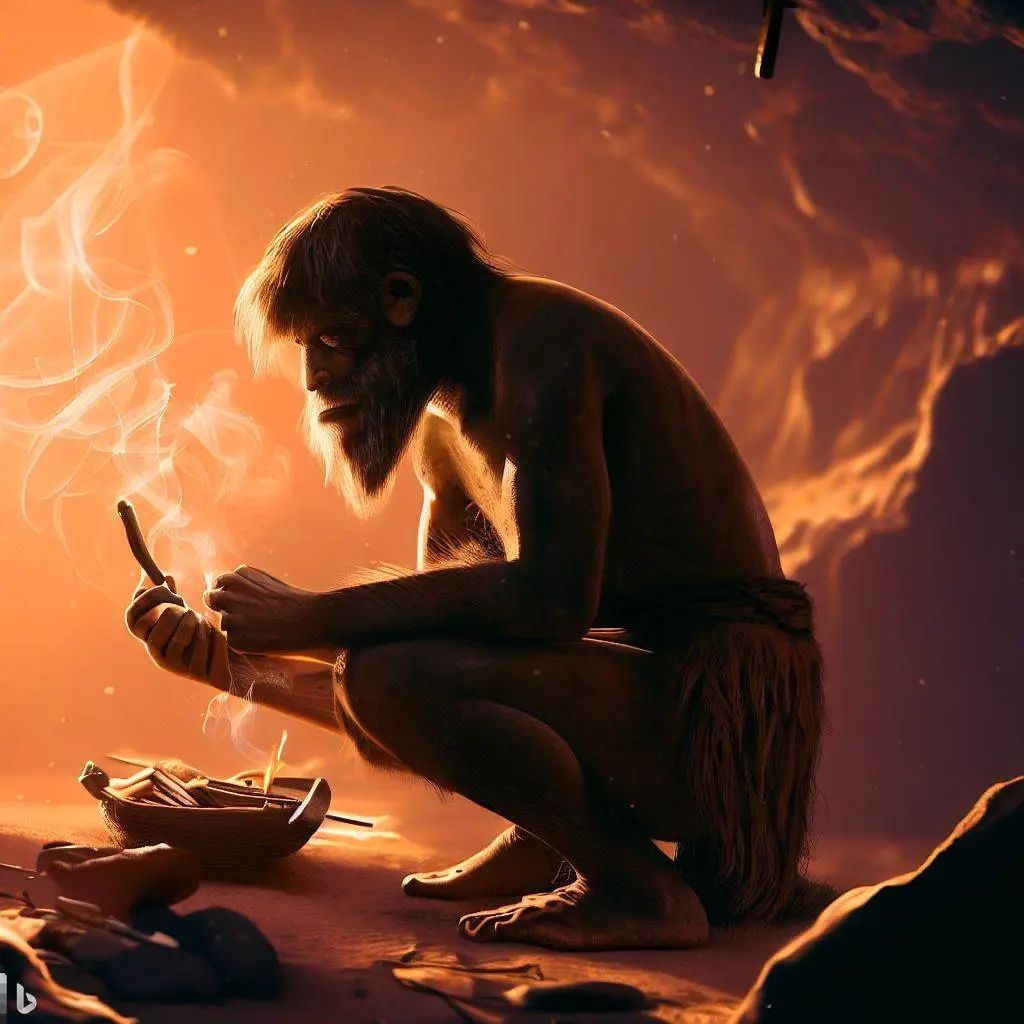
By harnessing the power of tools, early humans unlocked their potential and embarked on a transformative journey of innovation. The invention and refinement of tools marked a critical turning point in human history, laying the groundwork for future technological advancements and forever shaping the course of civilization.
Section 7: Invention of Wheels
Imagine a world without wheels – a world where transportation and trade are limited by the constraints of carrying heavy loads or relying solely on human or animal power. Now, picture the revolutionary moment when early humans discovered the concept of the wheel, forever changing the way they moved and transported goods.
The invention of the wheel is one of humanity's most transformative achievements. It opened up new horizons, expanding the possibilities of transportation and revolutionizing trade and communication. The wheel enabled humans to overcome physical limitations and traverse greater distances with relative ease.
The early days of wheel development were likely filled with trial and error. Imagine a group of innovative individuals experimenting with different concepts and materials, trying to figure out how to make a circular object roll smoothly. They observed nature, noticing how round objects, like logs or rocks, rolled effortlessly when set in motion. Inspired by this observation, they set out to create their own version of a rolling object.
At first, the early wheels were simple, made from solid wooden disks with a hole in the center to allow for an axle. These early wheels were used in the creation of carts and wagons, dramatically improving the transportation of goods. Imagine the excitement and awe as early humans witnessed the ease with which heavy loads could be moved using these wheeled vehicles.
As the use of wheels spread, societies adapted to this newfound technology. Trade routes expanded, connecting distant regions and facilitating the exchange of goods and ideas. Imagine the bustling markets and vibrant cultural exchanges that occurred as a result of this increased mobility. The wheel became a symbol of progress and innovation, transforming the way societies interacted and shaping the development of early civilizations.
The concept of the wheel soon extended beyond transportation. It found applications in various fields, including pottery making, where pottery wheels allowed for the efficient shaping and molding of clay vessels. This innovation revolutionized the production of pottery, making it faster and more precise.
In addition to its practical applications, the wheel also held symbolic significance. Its circular shape became associated with concepts such as unity, completion, and the cyclical nature of life. The wheel became a powerful metaphor, representing the continuous motion and progress of human civilization.
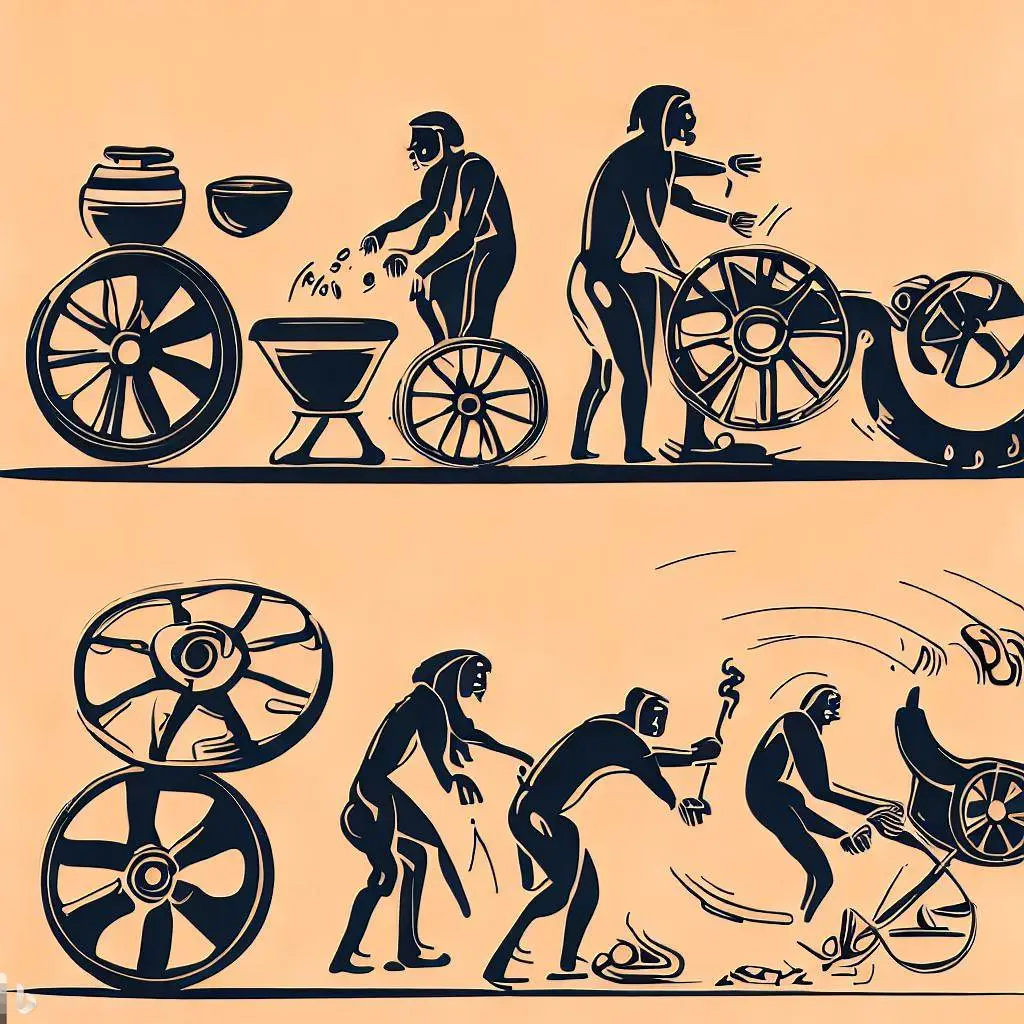
The invention of the wheel marked a turning point in human history. It unlocked new possibilities, shaping transportation, trade, and the very fabric of human society. The wheel laid the foundation for future technological advancements and continues to be an essential part of our modern world. Reflecting on the humble beginnings of this groundbreaking invention reminds us of the power of human curiosity, ingenuity, and the profound impact even the simplest of ideas can have on shaping the destiny of humanity.
Section 8: Megafauna Extinction
The Earth's past was once populated by a diverse array of majestic and colossal creatures known as megafauna. These were massive animals, often weighing several tons, that roamed the lands during the Pleistocene epoch. However, a significant event in prehistoric history forever altered the course of these magnificent creatures – the extinction of megafauna.
During the late Pleistocene, a period spanning from about 125,000 to 11,700 years ago, the planet experienced a wave of extinctions that affected numerous species of megafauna across different continents. This extinction event had a profound impact on the ecosystems of the time, leading to significant changes in the distribution and composition of species.
The exact causes of the megafauna extinction are still a subject of scientific debate, but several theories have been proposed. One hypothesis suggests that climate change played a role, as the Earth underwent a series of rapid temperature fluctuations during this period. These climatic shifts could have disrupted the habitats and food sources of megafauna, making it challenging for them to adapt and survive.
Another theory proposes that overhunting by early humans, who had become proficient hunters and developed advanced hunting techniques, contributed to the decline of megafauna populations. The arrival of humans in new territories coincided with the disappearance of many megafauna species, suggesting a potential correlation.
Imagine the interactions between early humans and these awe-inspiring creatures. Picture the challenges and dangers they faced when encountering formidable predators or when hunting for food. It is intriguing to think about the dynamics between humans and megafauna – a delicate balance between survival, competition, and coexistence.
The extinction of megafauna had far-reaching consequences for the ecosystems of the time. These colossal creatures played vital roles in maintaining ecological balance, influencing vegetation patterns, seed dispersal, and the behavior of other species. Their absence created ecological gaps, altering the dynamics of their respective ecosystems.
The loss of megafauna also had cultural and societal implications for early humans. These magnificent creatures would have been a source of inspiration, reverence, and perhaps even fear. They would have been woven into the fabric of early human societies, appearing in their stories, rituals, and art.
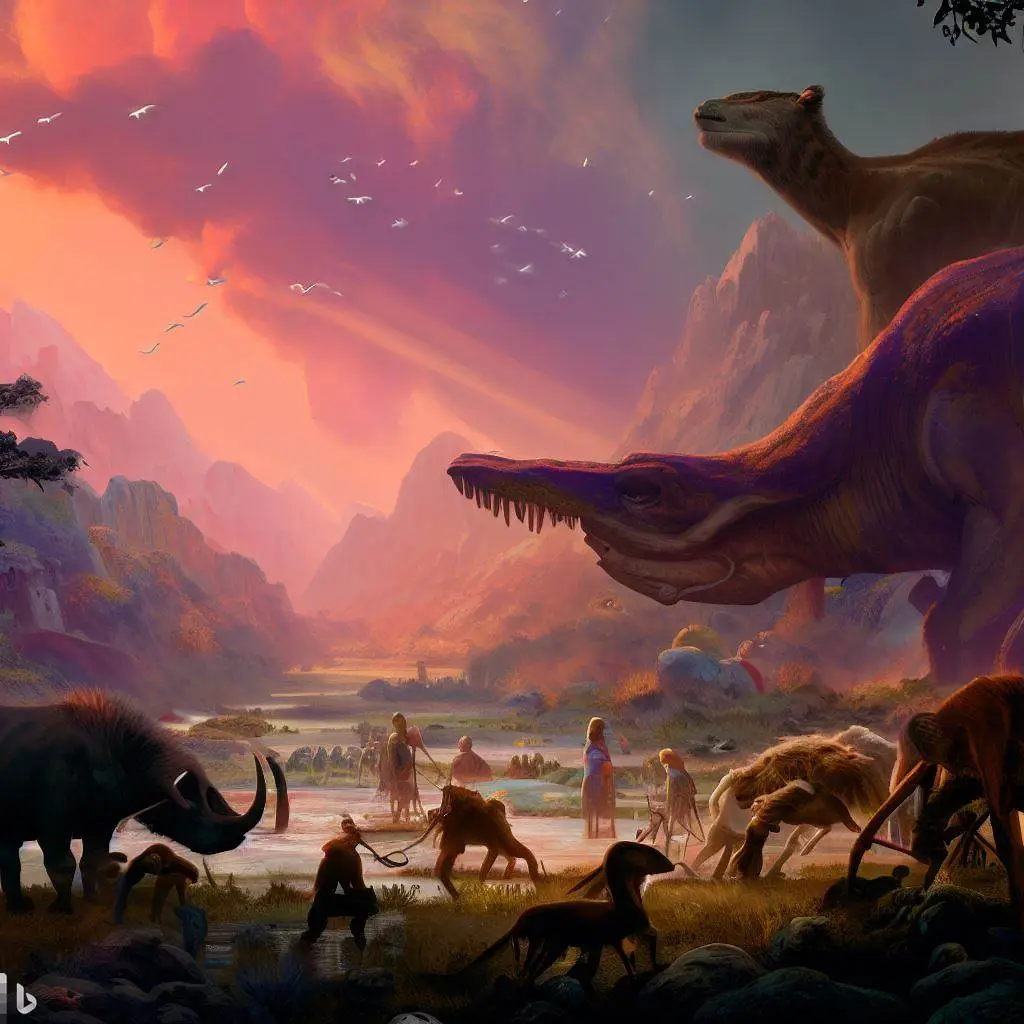
The extinction of megafauna marked the end of an era, signaling significant changes in the natural world and the evolving relationship between humans and their environment. It serves as a reminder of the intricate connections between species and the fragility of ecosystems. Studying the megafauna extinction allows us to gain insights into the interplay of factors that can shape the destiny of both individual species and the larger web of life on our planet.
Section 9: Agricultural Revolution
One of the most transformative events in human history was the agricultural revolution. It marked a pivotal shift from nomadic hunter-gatherer societies to settled farming communities, setting the stage for the development of civilization as we know it.
The agricultural revolution began around 10,000 BCE, a time when early humans began to intentionally cultivate plants and domesticate animals. This monumental change brought about a series of advancements that had profound implications for human societies.
The domestication of plants allowed early humans to transition from relying on wild food sources to cultivating crops for sustenance. They began selecting and cultivating certain plant species, such as wheat, barley, rice, and maize, which provided a stable and abundant food supply. With the establishment of agricultural practices, communities could produce surplus food, leading to population growth and the development of permanent settlements.
The domestication of animals played a complementary role in the agricultural revolution. Early humans started to tame and breed animals, such as goats, sheep, cattle, and pigs, for various purposes. Domesticated animals provided not only a source of food but also labor for farming tasks like plowing fields or transporting goods. This symbiotic relationship between humans and animals revolutionized agricultural practices and enabled humans to exert greater control over their environment.
The transition to agriculture brought significant changes in social organization and cultural practices. Settlements grew into villages, towns, and eventually cities, as people congregated around fertile lands and engaged in specialized occupations beyond food production. The surplus food generated by agriculture facilitated the emergence of new professions, such as craftsmen, traders, and religious leaders.
The agricultural revolution also had implications for technology and innovation. Early farmers developed tools and implements specifically designed for farming activities, such as plows, sickles, and irrigation systems. These advancements increased agricultural productivity, allowing for larger harvests and greater efficiency in food production.
However, the agricultural revolution was not without its challenges. The shift from a nomadic lifestyle to settled farming required new knowledge and skills. Early farmers had to learn about soil fertility, crop rotation, and irrigation techniques to optimize their yields. They also had to contend with the risks of crop failure, pests, and diseases that could devastate their harvests.
The impact of the agricultural revolution was profound and far-reaching. It not only transformed the way humans sourced their food but also laid the foundation for complex societies, technological advancements, and the rise of civilizations. The ability to produce surplus food allowed for population growth, the development of specialized trades, the establishment of economic systems, and the formation of social hierarchies.
As we reflect on the agricultural revolution, we recognize its significance in shaping the course of human history. It was a turning point that propelled humanity forward, paving the way for the advancements and complexities of the modern world.
Section 10: Climate Change and Human Adaptation
Throughout history, the Earth's climate has undergone natural fluctuations, and early humans had to adapt to these changes in order to survive and thrive. Climate change played a crucial role in shaping human history, influencing migration patterns, cultural practices, and the development of adaptive strategies.
During the prehistoric era, early human populations faced a range of climate variations, including periods of warming, cooling, and shifts in precipitation patterns. These changes had a direct impact on the availability of resources, the suitability of habitats, and the stability of ecosystems.
As temperatures fluctuated, vegetation patterns shifted, altering the distribution of plant and animal species. This forced early humans to adapt their hunting and gathering strategies to find alternative food sources. They had to track the movements of migratory animals, explore new territories, and adjust their diets accordingly.
Migration played a crucial role in human adaptation to changing climates. Early humans moved across vast landscapes, following the patterns of seasonal resources and seeking more favorable environments. They traversed different regions, adapting to various ecosystems and climates along the way. These migrations allowed for the exchange of knowledge, technology, and cultural practices between different groups of early humans.
The ability to adapt to changing climates relied on the ingenuity and resourcefulness of early humans. They developed a wide range of innovative tools, shelters, and clothing to cope with different weather conditions. For example, the invention of warm clothing and the use of fire for heat and cooking were crucial advancements that enabled humans to survive in colder environments.
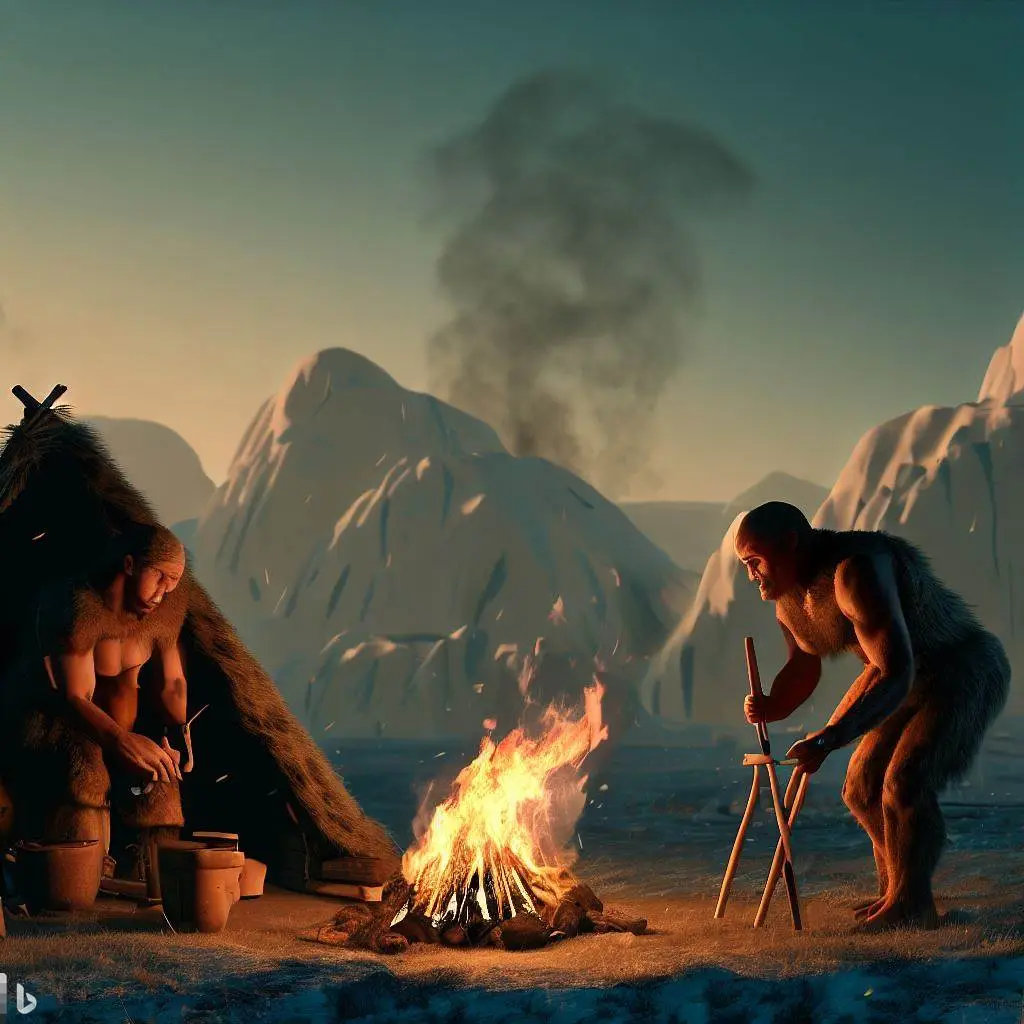
In addition to physical adaptations, early humans also developed social and cultural strategies to cope with climate change. They established communal systems, sharing resources and knowledge within their communities. This cooperation fostered resilience and collective survival in the face of environmental challenges.
The impacts of climate change on early human societies were not limited to short-term adaptations. They also influenced long-term cultural practices and belief systems. Changes in the natural world were often attributed to supernatural forces or deities, leading to the development of rituals, ceremonies, and belief systems centered around weather and climate.
The study of past climate change and its impact on early human populations provides valuable insights into our ability to adapt to environmental challenges today. It reminds us of the resilience and adaptability of our ancestors and the importance of recognizing and responding to the ever-changing dynamics of our planet.
As we reflect on the interplay between climate change and human adaptation in prehistoric times, we gain a deeper appreciation for the remarkable ability of early humans to navigate and survive in diverse and changing environments. Their ability to adapt to climatic challenges set the stage for the continued resilience and ingenuity of our species throughout history.
Section 11: Rise of Complex Societies
As early humans transitioned from small, nomadic groups to larger settled communities, a significant transformation occurred in the social and cultural landscape. This period marked the rise of complex societies, characterized by the development of hierarchical structures, specialized roles, and intricate social systems.
The transition to complex societies was driven by various factors, including advancements in agriculture, technological innovations, and the growth of trade networks. The shift from a primarily subsistence-based lifestyle to an agricultural one played a pivotal role in this development. The domestication of plants and animals allowed for a more reliable and abundant food supply, leading to population growth and the formation of permanent settlements.
With the establishment of settled communities, social hierarchies began to emerge. Leaders and ruling elites emerged, often based on factors such as wealth, lineage, or military prowess. These individuals assumed positions of authority, overseeing the governance and decision-making processes within their communities.
Specialized roles and occupations also became more prevalent in complex societies. People began to specialize in specific trades or professions, such as pottery making, metallurgy, or weaving. This division of labor allowed for increased efficiency and the production of specialized goods, leading to economic growth and the development of trade networks.
Religion and belief systems played a central role in the social fabric of complex societies. Early civilizations developed intricate religious practices, often revolving around gods and goddesses associated with natural phenomena, celestial bodies, and fertility. Religious institutions provided a framework for social cohesion, moral guidance, and the legitimization of authority.
The rise of complex societies also led to the development of written language systems. Early writing systems, such as cuneiform in Mesopotamia and hieroglyphics in ancient Egypt, emerged as a means of recording information, preserving historical records, and facilitating administrative tasks. The invention of writing revolutionized communication, enabling the transmission of knowledge across generations and the development of complex administrative systems.

The emergence of complex societies marked a significant milestone in human history. It laid the foundation for the growth of cities, the establishment of centralized states, and the development of more sophisticated forms of governance. It also fostered advancements in science, arts, and architecture, leaving a lasting legacy on human civilization.
The study of complex societies allows us to understand the complexities of social organization, the dynamics of power, and the challenges faced by early civilizations. It provides insights into the origins of institutions, cultural practices, and social norms that continue to shape our societies today.
In reflecting on the rise of complex societies, we gain a deeper appreciation for the remarkable achievements of our ancestors. Their ability to create intricate social systems, foster economic growth, and develop cultural expressions demonstrates the remarkable capacity of humans to adapt, innovate, and build upon the foundations laid by their predecessors.
Section 12: Megalithic Structures
In various parts of the world, ancient civilizations left behind awe-inspiring structures that continue to capture our imagination to this day. These structures, known as megalithic monuments, are massive stone constructions that were erected by early civilizations for religious, ceremonial, or astronomical purposes.
Megalithic structures are found in different regions around the world, including Europe, Asia, Africa, and the Americas. They vary in size, design, and cultural context, but they share common features such as the use of large stones and intricate engineering techniques.
One of the most famous examples of megalithic structures is Stonehenge in England. This ancient monument consists of a circular arrangement of standing stones, some weighing several tons. The purpose and significance of Stonehenge continue to be the subject of debate and speculation, with theories ranging from an astronomical observatory to a burial site or a ceremonial gathering place.
Gobekli Tepe in Turkey is another remarkable megalithic site. Dating back over 11,000 years, it predates Stonehenge and the Great Pyramids of Egypt. Gobekli Tepe consists of massive stone pillars arranged in circles and adorned with intricate carvings of animals and symbols. This discovery challenges previous assumptions about the capabilities of early humans and their capacity for large-scale construction.
Megalithic structures often required immense labor and engineering skills. The transportation and placement of massive stones required careful planning, organization, and the use of sophisticated techniques. It is a testament to the ingenuity and collective effort of early civilizations.
The purpose of these structures varied depending on the cultural context. They were often associated with religious or spiritual beliefs, serving as ceremonial sites for rituals, burials, or astronomical observations. Some megalithic structures aligned with astronomical events, indicating a deep understanding of celestial movements and their connection to earthly events.

The significance of megalithic structures extends beyond their physical presence. They provide valuable insights into the belief systems, social organization, and technological capabilities of ancient civilizations. They are a testament to human creativity, innovation, and the desire to leave a lasting mark on the landscape.
Studying megalithic structures helps us unravel the mysteries of our past and gain a deeper understanding of the cultural and technological achievements of early civilizations. It highlights the rich tapestry of human history and the remarkable accomplishments of our ancestors.
As we marvel at the magnificence of these ancient structures, we are reminded of the enduring human quest to explore the mysteries of the cosmos, to create monumental legacies, and to connect with something greater than ourselves. Megalithic structures stand as a testament to the resilience and creative spirit of early civilizations and continue to inspire wonder and awe in the present day.
Section 13: Development of Written Language
The development of written language was a transformative milestone in human history. It marked a significant leap in communication and information preservation, enabling societies to record knowledge, express ideas, and transmit information across generations.
The earliest forms of written language emerged independently in different parts of the world, reflecting the human need for a systematic and enduring means of communication. These early writing systems were pictographic or logographic, using symbols or characters to represent objects, ideas, or sounds.
One of the earliest known writing systems is cuneiform, which originated in ancient Mesopotamia (modern-day Iraq) around 3200 BCE. Cuneiform was created by pressing wedge-shaped marks into clay tablets using a stylus. It served various purposes, including administrative records, religious texts, and literary works, providing insights into the social, political, and cultural aspects of ancient Mesopotamian civilization.
In Egypt, hieroglyphs emerged around 3200 BCE. Hieroglyphs were a complex writing system consisting of pictorial symbols representing objects, sounds, or concepts. They were primarily used for religious and monumental inscriptions, such as those found on temple walls and royal tombs. The decipherment of hieroglyphs in the 19th century opened up a window into the rich history and mythology of ancient Egypt.
Another significant writing system is the Indus script, developed in the Indus Valley Civilization around 2600-1900 BCE (in present-day Pakistan and northwest India). The script remains undeciphered, making it a fascinating mystery yet to be fully unraveled. The symbols engraved on seals, pottery, and other artifacts provide glimpses into the trade, governance, and cultural practices of this ancient civilization.
The invention of the alphabet, a phonetic writing system based on individual sounds, revolutionized written communication. The Phoenician alphabet, developed around 1200 BCE, consisted of 22 consonant symbols. It served as the basis for many subsequent writing systems, including the Greek, Latin, and modern alphabets. The widespread adoption of alphabetic writing facilitated the spread of knowledge, literacy, and cultural exchange across different regions.

The development of written language had profound implications for human civilization. It enabled the accumulation of knowledge, the preservation of historical records, and the dissemination of ideas across time and space. Written texts became repositories of wisdom, literature, law, and scientific discoveries, forming the foundation for the intellectual and cultural advancements of subsequent generations.
Written language also played a crucial role in the codification of laws, governance, and the establishment of societal norms. Legal codes, such as Hammurabi's Code in ancient Babylon or the Twelve Tables in ancient Rome, were written down to ensure fairness, consistency, and accountability in legal proceedings.
Furthermore, written language facilitated the growth of trade, diplomacy, and cultural exchange. Merchant societies relied on written records for bookkeeping, contracts, and trade agreements. Diplomatic correspondences and treaties were documented in written form to establish agreements and resolve conflicts. Epistolary literature, such as the letters exchanged between ancient philosophers or historical figures, provided valuable insights into intellectual debates and personal interactions.
The development of written language transformed human society, shaping the course of history and facilitating the transmission of knowledge and ideas across generations. It paved the way for the proliferation of literature, scientific advancements, religious texts, and cultural heritage that continue to enrich our understanding of the past.
As we contemplate the significance of written language, we recognize its power to bridge gaps in time and space, to preserve the thoughts and experiences of our ancestors, and to connect us with the collective wisdom of human civilization. It stands as a testament to
our innate desire to communicate, express, and immortalize our ideas in a tangible and lasting form.
Section 14: Natural Disasters and Catastrophic Events
Throughout human history, natural disasters and catastrophic events have had a profound impact on civilizations, shaping their development, resilience, and survival. These extraordinary occurrences, often beyond human control, have left lasting imprints on societies and have forced communities to adapt, rebuild, and learn from the devastation they caused.
One such catastrophic event is volcanic eruptions. Volcanoes, powerful forces of nature, have erupted throughout history, releasing tremendous amounts of molten lava, ash, and gases into the atmosphere. The eruption of Mount Vesuvius in 79 CE is a well-known example. It buried the ancient Roman cities of Pompeii and Herculaneum under layers of volcanic ash, preserving them remarkably well and providing valuable insights into daily life in the Roman Empire.
Earthquakes, another natural disaster, occur when tectonic plates beneath the Earth's surface shift and release massive amounts of energy. These seismic events can result in significant destruction and loss of life. The ancient city of Pompeii, mentioned earlier, also experienced a devastating earthquake in 62 CE, which caused widespread damage before the volcanic eruption.
Floods have been both beneficial and destructive throughout history. Riverine civilizations, such as the Nile River in ancient Egypt or the Indus River in the Indus Valley Civilization, relied on annual floods for fertile soil and agricultural abundance. However, catastrophic floods, often caused by intense rainfall or the overflow of rivers, have resulted in widespread destruction of settlements, infrastructure, and agricultural lands.
Another catastrophic event that shaped human history is tsunamis. These colossal ocean waves, usually triggered by underwater earthquakes or volcanic eruptions, can travel great distances and wreak havoc along coastlines. The 2004 Indian Ocean tsunami, for example, devastated coastal communities in several countries, causing massive loss of life and infrastructure.
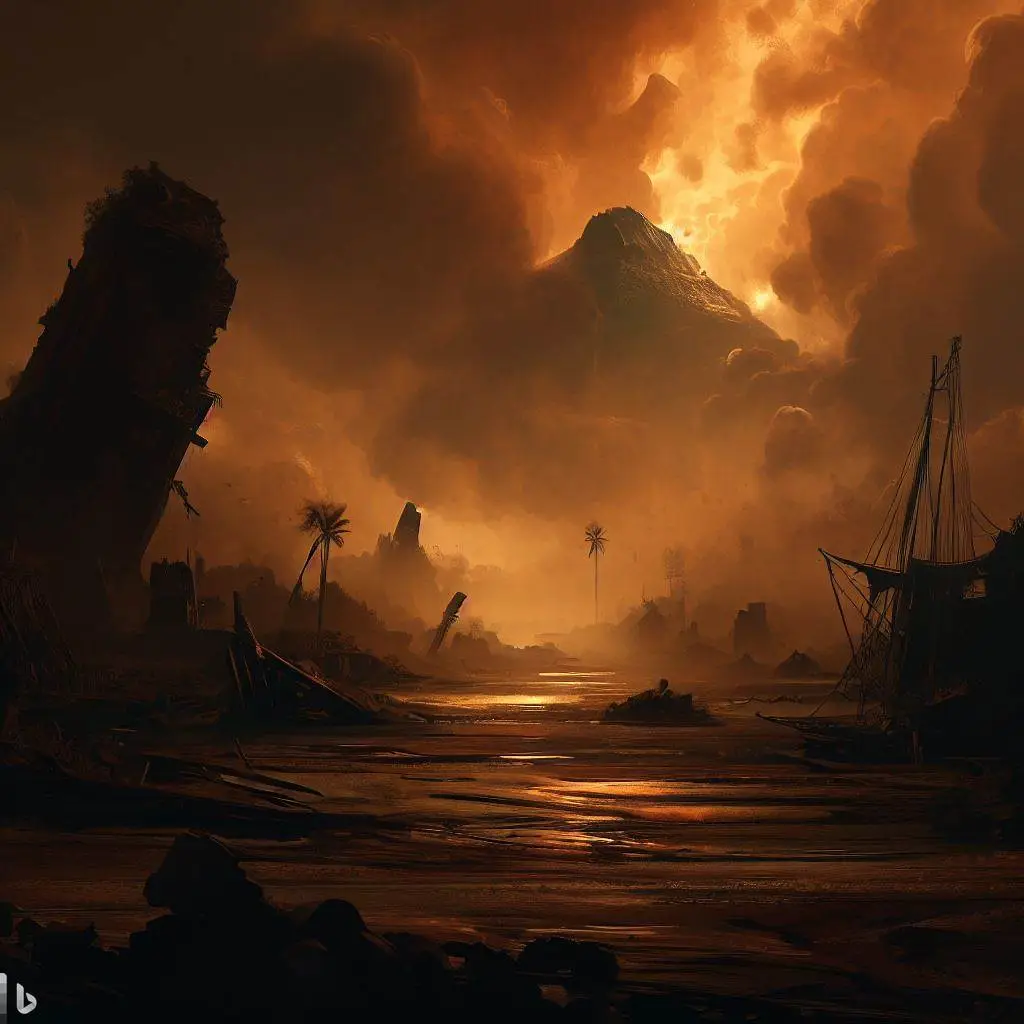
While natural disasters have caused immense destruction, they have also played a role in fostering resilience and prompting human innovation. In response to recurring disasters, societies developed strategies to mitigate their impact and enhance their ability to recover.
Communities prone to earthquakes, for instance, have developed architectural techniques and building codes to construct earthquake-resistant structures. In regions susceptible to flooding, intricate irrigation systems, such as those built by the ancient civilizations of Mesopotamia or China, were designed to manage water flow and prevent catastrophic inundation.
Disasters have also influenced cultural and religious beliefs. In many societies, catastrophic events were attributed to the wrath of deities or supernatural forces, leading to the development of rituals, ceremonies, and religious practices aimed at appeasing these higher powers. For example, the ancient Maya civilization believed that sacrifices were necessary to prevent natural disasters and maintain cosmic balance.
Moreover, the aftermath of natural disasters often fosters solidarity and collective action within communities. People come together to support one another, rebuild infrastructure, and provide assistance to those in need. These moments of resilience and compassion demonstrate the strength and endurance of human spirit in the face of adversity.
The study of natural disasters and their impact on civilizations provides valuable insights into the vulnerabilities and strengths of human societies. It highlights the importance of preparedness, sustainable development, and proactive measures to mitigate the risks associated with such events.
As we reflect on the impact of natural disasters throughout history, we are reminded of the precarious balance between human existence and the forces of nature. While we have made significant advancements in understanding and predicting natural phenomena, we must remain humble in the face of nature's power and continue to develop strategies that promote resilience and protect vulnerable communities.
The stories of survival and recovery in the aftermath of natural disasters inspire us
to learn from the past, adapt to changing circumstances, and work towards a more sustainable and resilient future.
Section 15: The Spread of Civilization
The spread of civilization marks a significant milestone in human history, as it represents the transition from scattered and isolated communities to the formation of complex societies with shared cultural, economic, and political systems. This period witnessed the expansion of civilizations and the exchange of ideas, technologies, and goods across vast regions, leading to profound transformations in human development.
One of the key drivers behind the spread of civilization was the emergence of trade networks. As early humans settled in specific regions and developed agricultural practices, surplus resources became available for exchange. This led to the establishment of trade routes, both over land and by sea, facilitating the movement of goods and fostering cultural interactions.
The Silk Road, a network of ancient trade routes connecting the East and West, played a crucial role in the exchange of goods, ideas, and technologies between different civilizations. It enabled the flow of silk, spices, precious metals, and other valuable commodities, creating economic opportunities and cultural exchanges along its vast expanse. The Silk Road not only facilitated trade but also acted as a conduit for the transmission of knowledge, beliefs, and innovations.
The expansion of civilizations also led to the formation of empires. Empires emerged as powerful states that extended their authority over vast territories, often incorporating diverse regions and cultures. These empires, such as the Roman Empire, the Persian Empire, and the Maurya Empire, exerted political control, implemented administrative systems, and promoted cultural assimilation within their domains.

The spread of civilization was not limited to the physical expansion of empires or trade networks. It also encompassed the diffusion of knowledge, including advancements in science, mathematics, philosophy, and the arts. Ancient centers of learning, such as the Library of Alexandria in Egypt or the House of Wisdom in Baghdad, served as hubs of intellectual exchange, attracting scholars, philosophers, and scientists from different regions.
The exchange of ideas and cultural practices often resulted in the amalgamation and synthesis of diverse traditions. For instance, the Hellenistic period, following the conquests of Alexander the Great, witnessed the blending of Greek, Persian, Egyptian, and other local cultures, resulting in a rich and vibrant cultural tapestry.
Religion and spirituality played a significant role in the spread of civilization as well. Missionaries, teachers, and religious leaders traveled across regions, disseminating their beliefs and converting populations to new faiths. The spread of Buddhism from India to East Asia, the expansion of Islam across the Arabian Peninsula and beyond, and the missionary activities of early Christians are notable examples of religious movements that shaped the cultural and social landscape of civilizations.
The spread of civilization also brought about challenges and conflicts. The clash of cultures, territorial disputes, and competition for resources often led to tensions and sometimes wars. However, these interactions also fostered cultural exchange, intellectual growth, and technological advancements as civilizations learned from one another's strengths and innovations.
As civilizations expanded and interacted, the world became more interconnected and interdependent. Trade routes allowed the dissemination of not only material goods but also ideas, beliefs, and cultural practices. The exchange of knowledge and technologies propelled human progress and led to innovations in agriculture, engineering, medicine, and other fields.
The spread of civilization continues to shape our world today. The legacies of ancient civilizations are evident in our political systems, legal frameworks, artistic expressions, and societal norms. The interconnectedness fostered by trade and cultural exchange has laid the foundation for the globalized world we inhabit.
As we reflect on the spread of civilization, we are reminded of the complex interplay between diverse cultures, the significance of cultural diffusion, and the lasting impact
of past civilizations on our present. It is through understanding our shared history and appreciating the contributions of different civilizations that we can strive for a more inclusive and harmonious future.

In conclusion, the spread of civilization represents a pivotal chapter in human history. It encompasses the expansion of trade networks, the rise and fall of empires, the exchange of ideas and knowledge, and the intermingling of cultures. This period of human development shaped the world we inhabit today, leaving a lasting legacy of innovation, diversity, and interconnectedness. By studying the spread of civilization, we gain insights into the resilience and adaptability of human societies and are inspired to build a better future based on the lessons of the past.

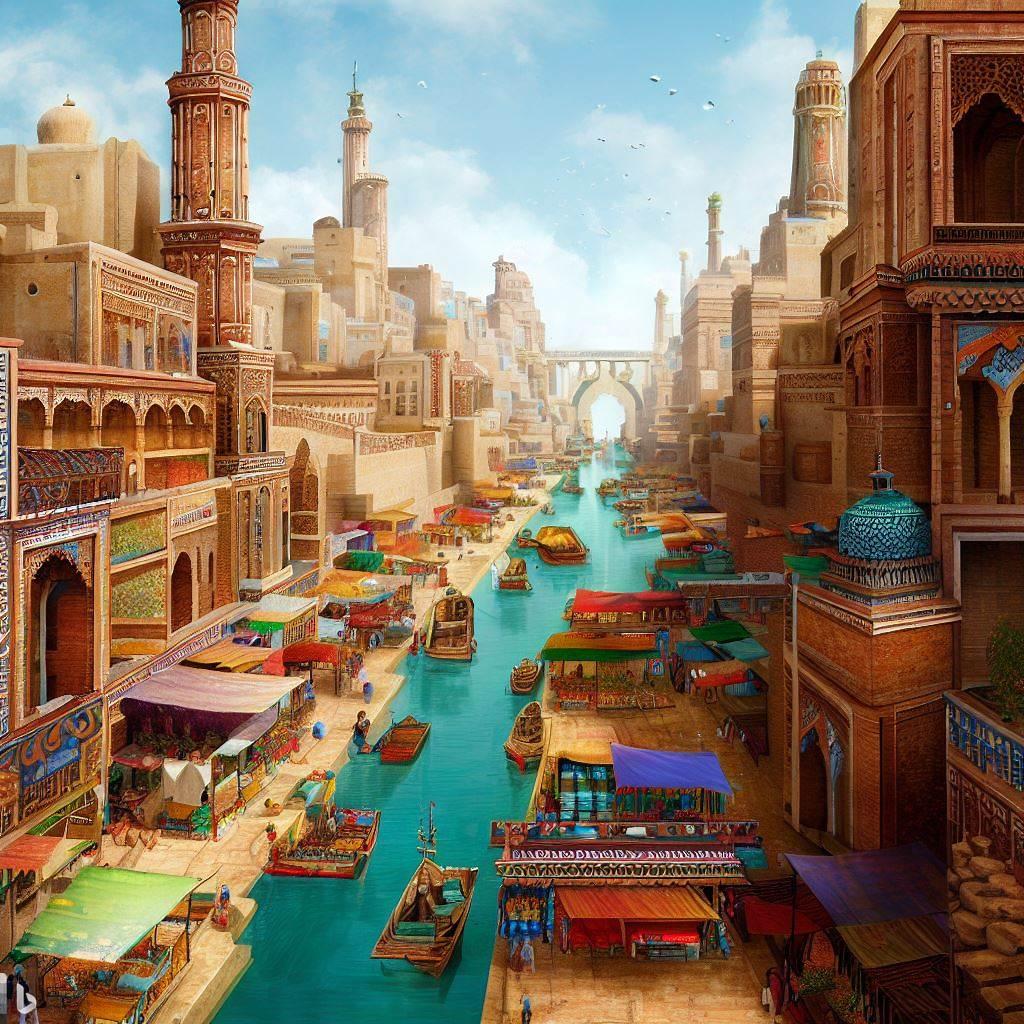
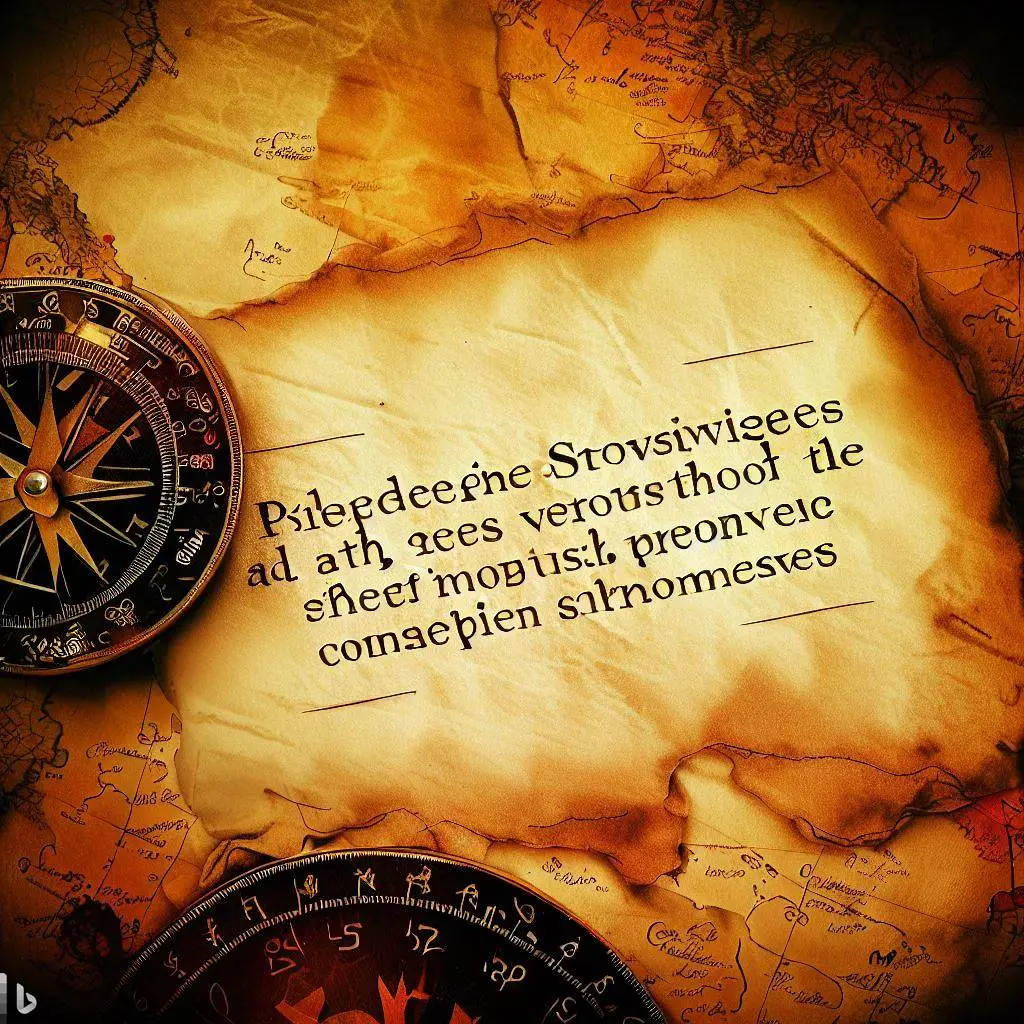




Add a Comment: